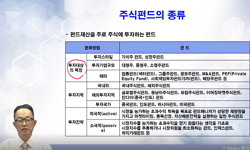The purpose of this study is to analyze the status of understanding on the definition and attribute of logarithms and to be helpful for improving the teaching method of the unit of logarithms. For the purpose of this, the research question were set up...
http://chineseinput.net/에서 pinyin(병음)방식으로 중국어를 변환할 수 있습니다.
변환된 중국어를 복사하여 사용하시면 됩니다.
- 中文 을 입력하시려면 zhongwen을 입력하시고 space를누르시면됩니다.
- 北京 을 입력하시려면 beijing을 입력하시고 space를 누르시면 됩니다.
지수의 역관계로서 로그 개념에 대한 실태분석 = (The) Analysis of students` Concept of Logarithm by The Inverse Relationship of Exponents
한글로보기https://www.riss.kr/link?id=T11984207
- 저자
-
발행사항
청원군 : 한국교원대학교 대학원, 2010
-
학위논문사항
학위논문(석사) -- 한국교원대학교 대학원 , 수학교육학과 수학교육전공 , 2010. 2
-
발행연도
2010
-
작성언어
한국어
- 주제어
-
DDC
510.7 판사항(22)
-
발행국(도시)
충청북도
-
형태사항
viii, 76 p. : 삽도 ; 26 cm
-
일반주기명
한국교원대학교 논문은 저작권에 의해 보호받습니다.
지도교수 : 이광호
참고문헌 : p.60-61 - 소장기관
-
0
상세조회 -
0
다운로드
부가정보
다국어 초록 (Multilingual Abstract)
For the purpose of this, the research question were set up as follows:
1. How is the understanding of the definition of logarithms by the inverse relationship of exponents?
a. How is the understanding of the definition of logarithms?
b. How is the calculation application by the definition of logarithms?
2. How is the understanding of the attribute of logarithms by the inverse relationship of exponents?
a. How is the understanding of the attribute of logarithms?
b. How is the calculation application by the attribute of logarithms?
In order to carry out this research, the researcher arbitrarily selected four schools of A and B high school located in Daejeon and C and D high school located in Nonsan-si, Chungnam and sampled 243 students from 8 classes, 2 classes of 2nd graders each from those high schools.
The tool of examination was produced referring to the textbook and precedent studies of the 7th Educational Curriculum. Analyzing the results of preliminary tests, the problems of test papers were modified and complemented. The questions selected for this research were 12 questions, and 4 scopes of contents which are the understanding of the definition of logarithms, the calculation application on the definition of logarithms, the understanding on the attribute of logarithms and the calculation application on the attribute of logarithms were divided and analyzed. The analysis results were presented by the scopes of each question.
On this foundation, I drew the conclusion of this study like the following.
First, in the question to ask the definition of logarithms by the inverse relationship of exponents, the percentage of correct answers were 74. 07%(180 students), and also in the question offered by concrete numerical formula, a high percentage of correct answers was shown. What was shown through solving process, they tended to simplify the expressions by using the attribute of logarithms rather than to find out the equivalent expressions. It indicates that the students are familiar with the use of logarithm symbols by mechanical transformation like arithmetic symbols as tools and the use of the attribute of logarithms.
In the question of presenting the condition of base and antilogarithm to define the logarithms, most of the students learned the condition by heart without understanding the condition of base and antilogarithm by use of exponents. It’s because they think of exponents and logarithms as different ones. Accordingly, many students did not understand the relationship of exponents and logarithms.
In conclusion, in order to understand the definition of logarithms, it is necessary to understand the previous unit on the understanding on exponents and the understanding on bases and exponents from the unit of logarithms and the relationship of bases and antilogarithms. However, the students are familiar with the use of the attribute of logarithms instead of understanding the relationship between exponential definition and logarithmic definition. Not only using logarithm as a tool, they should understand the relationship between exponents and logarithms exactly. In order to do that, it is necessary to help them understand the definition of logarithms associated with the forms of logarithms and exponents.
Secondly, in the questions to explain the attribute of logarithms by exponents, the percentage of correct answers was 18.63%, that is, many students did not explain the attribute of logarithms by exponents. It indicates that students depend on simple memorizing to study the attribute of logarithms. It is judged that the standard of understanding the attribute is quite low.
The questions to investigate whether they can calculate the expressions of the four arithmetical operations by use of the attribute of logarithms were provided. The rate of correct answers was 60% on the average. The percentage of correct answers for the question to ask the attribute of logarithm log_(a)x-log_(a)y=log_(a)x/y was the lowest among the questions. Like this, we could know that the students knew that the addition and subtraction of logarithms is transformed into multiplication and division, but in the calculation to multiply or divide antilogarithms, they did not understand the attribute of logarithms exactly. Moreover, incomparison with the questions for the understanding of the attribute of logarithms, the questions of calculation applications showed comparatively high rate of correct answers. Therefore, as they depended on memorizing, they tended to answer without consistency according to types of question.
However, the percentage of correct answers for the questions to explain the attribute of logarithms by use of the inverse relationship of exponents was more than 90%, and the types of incorrect answers were examined. As a result, in comparison with the students who failed to explain the attribute, the rate of the students who made mistakes to apply the attribute was very low. Therefore, the teachers should guide the students to understand the attribute of logarithms through the inverse relationship with exponents, not just to understand it by memorizing. The teachers should teach the student to exactly understand the relationship between the logarithmic summation(log_(a)x+log_(a)y=log_(a)xy) and the multiplication of exponents(a^(x)a^(y)=a^(x+y)), and the relationship between logarithmic scalar multiplication(plog_(a)x=log_(a)x^(p)) and (a^(x))^(p)=a^(xp). Therefore, the teachers should help the students understand the law of exponents in connection with those attributes. In addition, the teachers should try to arouse the students’ interest and curiosity about the attribute of logarithms by explaining the historical backgrounds of it.
The purpose of this study is to analyze the status of understanding on the definition and attribute of logarithms and to be helpful for improving the teaching method of the unit of logarithms.
For the purpose of this, the research question were set up as follows:
1. How is the understanding of the definition of logarithms by the inverse relationship of exponents?
a. How is the understanding of the definition of logarithms?
b. How is the calculation application by the definition of logarithms?
2. How is the understanding of the attribute of logarithms by the inverse relationship of exponents?
a. How is the understanding of the attribute of logarithms?
b. How is the calculation application by the attribute of logarithms?
In order to carry out this research, the researcher arbitrarily selected four schools of A and B high school located in Daejeon and C and D high school located in Nonsan-si, Chungnam and sampled 243 students from 8 classes, 2 classes of 2nd graders each from those high schools.
The tool of examination was produced referring to the textbook and precedent studies of the 7th Educational Curriculum. Analyzing the results of preliminary tests, the problems of test papers were modified and complemented. The questions selected for this research were 12 questions, and 4 scopes of contents which are the understanding of the definition of logarithms, the calculation application on the definition of logarithms, the understanding on the attribute of logarithms and the calculation application on the attribute of logarithms were divided and analyzed. The analysis results were presented by the scopes of each question.
On this foundation, I drew the conclusion of this study like the following.
First, in the question to ask the definition of logarithms by the inverse relationship of exponents, the percentage of correct answers were 74. 07%(180 students), and also in the question offered by concrete numerical formula, a high percentage of correct answers was shown. What was shown through solving process, they tended to simplify the expressions by using the attribute of logarithms rather than to find out the equivalent expressions. It indicates that the students are familiar with the use of logarithm symbols by mechanical transformation like arithmetic symbols as tools and the use of the attribute of logarithms.
In the question of presenting the condition of base and antilogarithm to define the logarithms, most of the students learned the condition by heart without understanding the condition of base and antilogarithm by use of exponents. It’s because they think of exponents and logarithms as different ones. Accordingly, many students did not understand the relationship of exponents and logarithms.
In conclusion, in order to understand the definition of logarithms, it is necessary to understand the previous unit on the understanding on exponents and the understanding on bases and exponents from the unit of logarithms and the relationship of bases and antilogarithms. However, the students are familiar with the use of the attribute of logarithms instead of understanding the relationship between exponential definition and logarithmic definition. Not only using logarithm as a tool, they should understand the relationship between exponents and logarithms exactly. In order to do that, it is necessary to help them understand the definition of logarithms associated with the forms of logarithms and exponents.
Secondly, in the questions to explain the attribute of logarithms by exponents, the percentage of correct answers was 18.63%, that is, many students did not explain the attribute of logarithms by exponents. It indicates that students depend on simple memorizing to study the attribute of logarithms. It is judged that the standard of understanding the attribute is quite low.
The questions to investigate whether they can calculate the expressions of the four arithmetical operations by use of the attribute of logarithms were provided. The rate of correct answers was 60% on the average. The percentage of correct answers for the question to ask the attribute of logarithm log_(a)x-log_(a)y=log_(a)x/y was the lowest among the questions. Like this, we could know that the students knew that the addition and subtraction of logarithms is transformed into multiplication and division, but in the calculation to multiply or divide antilogarithms, they did not understand the attribute of logarithms exactly. Moreover, incomparison with the questions for the understanding of the attribute of logarithms, the questions of calculation applications showed comparatively high rate of correct answers. Therefore, as they depended on memorizing, they tended to answer without consistency according to types of question.
However, the percentage of correct answers for the questions to explain the attribute of logarithms by use of the inverse relationship of exponents was more than 90%, and the types of incorrect answers were examined. As a result, in comparison with the students who failed to explain the attribute, the rate of the students who made mistakes to apply the attribute was very low. Therefore, the teachers should guide the students to understand the attribute of logarithms through the inverse relationship with exponents, not just to understand it by memorizing. The teachers should teach the student to exactly understand the relationship between the logarithmic summation(log_(a)x+log_(a)y=log_(a)xy) and the multiplication of exponents(a^(x)a^(y)=a^(x+y)), and the relationship between logarithmic scalar multiplication(plog_(a)x=log_(a)x^(p)) and (a^(x))^(p)=a^(xp). Therefore, the teachers should help the students understand the law of exponents in connection with those attributes. In addition, the teachers should try to arouse the students’ interest and curiosity about the attribute of logarithms by explaining the historical backgrounds of it.
국문 초록 (Abstract)
이를 위하여 다음과 같이 연구 문제를 설정하였다.
1. 지수의 역관계에 의한 로그정의에 대한 이해는 어떠한가?
가. 로그의 정의에 대한 이해는 어떠한가?
나. 로그의 정의에 따른 계산활용은 어떠한가?
2. 지수의 역관계에 의한 로그성질에 대한 이해는 어떠한가?
가. 로그의 성질에 대한 이해는 어떠한가?
나. 로그의 성질에 대한 계산활용은 어떠한가?
본 연구를 수행하기 위하여 연구자가 임의로 선정하여 ,대전광역시에 소재한 A고등학교, B고등학교, 충남 논산시에 위치한 C고등학교, D고등학교의 총4개 학교 각각 고등학교 2학년 2학급씩 8학급의 243명의 학생들을 대상으로 조사 연구하였다.
검사 도구는 우리나라 7차 교육과정의 교과서, 선행연구를 참고하여 제작하였고 고등학교 2학년 학생들을 대상으로 로그 개념 이해 검사지에 대한 제반 정보를 얻기 위해서 예비 검사를 실시하였다. 예비 검사를 실시한 결과를 분석하여 검사지의 문제점을 수정, 보완하였다. 본 연구를 위해 선정된 문항은 모두 12문항이며 문항 내용별 영역으로는 로그 정의에 대한 이해 및 로그 정의에 대한 계산 활용, 로그 성질에 대한 이해, 로그 성질에 대한 계산 활용 이렇게 4가지 영역으로 구분하여 분석하였다. 문항별 분석 결과는 검사 문항의 각 영역별로 제시하였다.
본 연구의 결과로부터 다음과 같은 결론을 얻을 수 있었다.
첫째, 지수와의 역관계로서 로그의 정의를 지수를 통하여 묻는 문항에서 정답률은 74.07%(180명)가 나왔고, 구체적 수식으로 제시된 문항에서도 높은 정답률을 보였다. 풀이 과정을 통하여 알 수 있는 점은 각각의 동치인 식을 찾기 보다는 로그의 성질을 적용하여 식을 간단히 하려는 경향이 있었다. 이로부터 로그라는 기호를 도구적 연산기호처럼 기계적 변환과 로그 성질 사용에 익숙해 있다는 것을 알 수 있다.
로그가 정의되기 위한 밑과 진수의 조건을 제시하는 문항에서 학생들은 지수를 이용하여 밑과 진수의 조건을 이해하기 보다는 조건을 암기하였다. 이는 지수와 로그가 별개라고 간주하기 때문이다. 따라서 많은 학생들이 지수와 로그의 관계를 이해하지 못하였다.
결과적으로 로그의 정의에 대한 이해를 돕기 위해서는 이전 단원인 지수에 대한 이해와 지수단원의 밑과 지수, 로그단원의 밑과 진수의 관계에 대한 이해가 필요하다. 하지만 학생들은 지수 정의와 로그 정의의 관계를 이해하기 보다는 로그의 성질의 사용에 익숙하다. 로그를 도구적 사용에만 치우 치는게 아니라 지수와 로그의 관계를 정확하게 이해해야 한다. 이를 위해서는 로그의 정의 형태 (log_(a)N=x⇔a^(x)=N)를 정의 하는데 있어 지수의 형태와 로그의 형태를 연결시켜 이해할 수 있도록 도와야 한다.
둘째, 로그 성질을 지수로 설명하는 질문에서 정답률은 18.63%로 많은 학생들이 로그의 성질을 지수로 설명하지 못하였다. 이로부터 학생들은 로그의 성질을 단순히 암기에 의존하고 있다는 것을 알 수 있다. 성질 이해정도는 많이 낮은 편이라고 말할 수 있다.
로그의 성질을 활용하여 사칙연산의 식을 계산할 수 있는지를 알아 보기 위한 문항을 제시하였다. 평균 60%정도의 정답률을 보였다. 그 중에서 로그의 성질 log_(a)x-log_(a)y=log_(a)x/y를 묻는 문항의 정답률이 가장 낮은 정답률을 보였다. 이와 같이 학생들은 로그의 덧셈과 뺄셈이 곱셈과 나눗셈으로 변형된다는 것을 알고 있지만 진수만 곱하거나 나누는 계산에서 로그의 성질을 잘못 기억하고 있다는 것을 알 수 있다. 또한 로그의 성질 이해 문항에 비해 계산 활용문제에 있어서는 비교적 높은 정답률을 보이고 있다. 따라서 암기에 의존하기 때문에 문제 유형에 따라 일관성 없는 답을 하는 경우가 나타났다.
하지만 지수와의 역관계를 이용하여 성질을 설명한 학생들의 성질 활용문제의 정답률은 90%이상의 정답률을 보였고 이 학생들 중 활용문제에서 오답을 제시한 학생들의 오답유형을 조사하였다. 그 결과 성질을 잘못 적용한 학생들의 비율이 성질을 설명하지 못한 학생들 성질을 잘못 적용한 학생들의 비율에 비해 매우 낮게 나타났다. 따라서 암기에 의존한 성질 이해가 아닌 지수와의 역관계를 통한 로그의 성질을 이해할 수 있게 지도해야 한다. 로그의 합(log_(a)x+log_(a)y=log_(a)xy)과 지수의 곱(a^(x)a^(y)=a^(x+y))의 관계 로그의 상수배(plog_(a)x=log_(a)x^(p))와 지수의 상수번 곱((a^(x))^(p)=a^(xp))의 관계를 정확하게 인식할 수 있도록 가르쳐야 한다. 따라서 교사는 현행 교과서의 지수법칙에서 이 성질들을 연결시켜 이해할 수 있도록 도와야 한다. 그리고 로그 성질의 역사적 배경 또한 지도하여 로그의 성질에 대한 흥미와 호기심을 유발하도록 하여야 한다.
본 연구에서는 우리나라 학생들을 대상으로 로그의 개념 이해정도를 조사하기 위한 것이다. 즉 로그의 정의, 로그의 성질의 이해에 대한 실태를 분석하여 로그 단원의 지도방법 개선에 조금...
본 연구에서는 우리나라 학생들을 대상으로 로그의 개념 이해정도를 조사하기 위한 것이다. 즉 로그의 정의, 로그의 성질의 이해에 대한 실태를 분석하여 로그 단원의 지도방법 개선에 조금이라도 도움을 주려고 한다.
이를 위하여 다음과 같이 연구 문제를 설정하였다.
1. 지수의 역관계에 의한 로그정의에 대한 이해는 어떠한가?
가. 로그의 정의에 대한 이해는 어떠한가?
나. 로그의 정의에 따른 계산활용은 어떠한가?
2. 지수의 역관계에 의한 로그성질에 대한 이해는 어떠한가?
가. 로그의 성질에 대한 이해는 어떠한가?
나. 로그의 성질에 대한 계산활용은 어떠한가?
본 연구를 수행하기 위하여 연구자가 임의로 선정하여 ,대전광역시에 소재한 A고등학교, B고등학교, 충남 논산시에 위치한 C고등학교, D고등학교의 총4개 학교 각각 고등학교 2학년 2학급씩 8학급의 243명의 학생들을 대상으로 조사 연구하였다.
검사 도구는 우리나라 7차 교육과정의 교과서, 선행연구를 참고하여 제작하였고 고등학교 2학년 학생들을 대상으로 로그 개념 이해 검사지에 대한 제반 정보를 얻기 위해서 예비 검사를 실시하였다. 예비 검사를 실시한 결과를 분석하여 검사지의 문제점을 수정, 보완하였다. 본 연구를 위해 선정된 문항은 모두 12문항이며 문항 내용별 영역으로는 로그 정의에 대한 이해 및 로그 정의에 대한 계산 활용, 로그 성질에 대한 이해, 로그 성질에 대한 계산 활용 이렇게 4가지 영역으로 구분하여 분석하였다. 문항별 분석 결과는 검사 문항의 각 영역별로 제시하였다.
본 연구의 결과로부터 다음과 같은 결론을 얻을 수 있었다.
첫째, 지수와의 역관계로서 로그의 정의를 지수를 통하여 묻는 문항에서 정답률은 74.07%(180명)가 나왔고, 구체적 수식으로 제시된 문항에서도 높은 정답률을 보였다. 풀이 과정을 통하여 알 수 있는 점은 각각의 동치인 식을 찾기 보다는 로그의 성질을 적용하여 식을 간단히 하려는 경향이 있었다. 이로부터 로그라는 기호를 도구적 연산기호처럼 기계적 변환과 로그 성질 사용에 익숙해 있다는 것을 알 수 있다.
로그가 정의되기 위한 밑과 진수의 조건을 제시하는 문항에서 학생들은 지수를 이용하여 밑과 진수의 조건을 이해하기 보다는 조건을 암기하였다. 이는 지수와 로그가 별개라고 간주하기 때문이다. 따라서 많은 학생들이 지수와 로그의 관계를 이해하지 못하였다.
결과적으로 로그의 정의에 대한 이해를 돕기 위해서는 이전 단원인 지수에 대한 이해와 지수단원의 밑과 지수, 로그단원의 밑과 진수의 관계에 대한 이해가 필요하다. 하지만 학생들은 지수 정의와 로그 정의의 관계를 이해하기 보다는 로그의 성질의 사용에 익숙하다. 로그를 도구적 사용에만 치우 치는게 아니라 지수와 로그의 관계를 정확하게 이해해야 한다. 이를 위해서는 로그의 정의 형태 (log_(a)N=x⇔a^(x)=N)를 정의 하는데 있어 지수의 형태와 로그의 형태를 연결시켜 이해할 수 있도록 도와야 한다.
둘째, 로그 성질을 지수로 설명하는 질문에서 정답률은 18.63%로 많은 학생들이 로그의 성질을 지수로 설명하지 못하였다. 이로부터 학생들은 로그의 성질을 단순히 암기에 의존하고 있다는 것을 알 수 있다. 성질 이해정도는 많이 낮은 편이라고 말할 수 있다.
로그의 성질을 활용하여 사칙연산의 식을 계산할 수 있는지를 알아 보기 위한 문항을 제시하였다. 평균 60%정도의 정답률을 보였다. 그 중에서 로그의 성질 log_(a)x-log_(a)y=log_(a)x/y를 묻는 문항의 정답률이 가장 낮은 정답률을 보였다. 이와 같이 학생들은 로그의 덧셈과 뺄셈이 곱셈과 나눗셈으로 변형된다는 것을 알고 있지만 진수만 곱하거나 나누는 계산에서 로그의 성질을 잘못 기억하고 있다는 것을 알 수 있다. 또한 로그의 성질 이해 문항에 비해 계산 활용문제에 있어서는 비교적 높은 정답률을 보이고 있다. 따라서 암기에 의존하기 때문에 문제 유형에 따라 일관성 없는 답을 하는 경우가 나타났다.
하지만 지수와의 역관계를 이용하여 성질을 설명한 학생들의 성질 활용문제의 정답률은 90%이상의 정답률을 보였고 이 학생들 중 활용문제에서 오답을 제시한 학생들의 오답유형을 조사하였다. 그 결과 성질을 잘못 적용한 학생들의 비율이 성질을 설명하지 못한 학생들 성질을 잘못 적용한 학생들의 비율에 비해 매우 낮게 나타났다. 따라서 암기에 의존한 성질 이해가 아닌 지수와의 역관계를 통한 로그의 성질을 이해할 수 있게 지도해야 한다. 로그의 합(log_(a)x+log_(a)y=log_(a)xy)과 지수의 곱(a^(x)a^(y)=a^(x+y))의 관계 로그의 상수배(plog_(a)x=log_(a)x^(p))와 지수의 상수번 곱((a^(x))^(p)=a^(xp))의 관계를 정확하게 인식할 수 있도록 가르쳐야 한다. 따라서 교사는 현행 교과서의 지수법칙에서 이 성질들을 연결시켜 이해할 수 있도록 도와야 한다. 그리고 로그 성질의 역사적 배경 또한 지도하여 로그의 성질에 대한 흥미와 호기심을 유발하도록 하여야 한다.
목차 (Table of Contents)
- Ⅰ. 서론 1
- A. 연구의 필요성 및 목적 1
- B. 연구 문제 4
- C. 용어의 정의 5
- D. 연구의 제한점 6
- Ⅰ. 서론 1
- A. 연구의 필요성 및 목적 1
- B. 연구 문제 4
- C. 용어의 정의 5
- D. 연구의 제한점 6
- Ⅱ. 문헌검토 7
- A. 수학적 개념이해 7
- 1. 개념의 의미와 형성과정 7
- 2. 개념의 이해 9
- B. 로그 12
- 1. 로그의 발견 12
- 2. 로그의 발전 18
- C. 선행연구 고찰 20
- Ⅲ. 연구 방법 및 절차 24
- A. 연구 대상 24
- B. 연구 방법 24
- C. 검사 도구 25
- D. 자료수집방법 27
- 1. 예비검사실시 27
- 2. 본검사실시 및 자료수집 28
- E. 자료 분석 방법 28
- Ⅳ. 결과 및 논의 31
- A. 결과 31
- B. 논의 53
- Ⅴ. 결론 및 제언 55
- A. 결론 55
- B. 제언 58
- Ⅳ. 참고문헌 60
- ABSTRACT 62
- 부록 66












